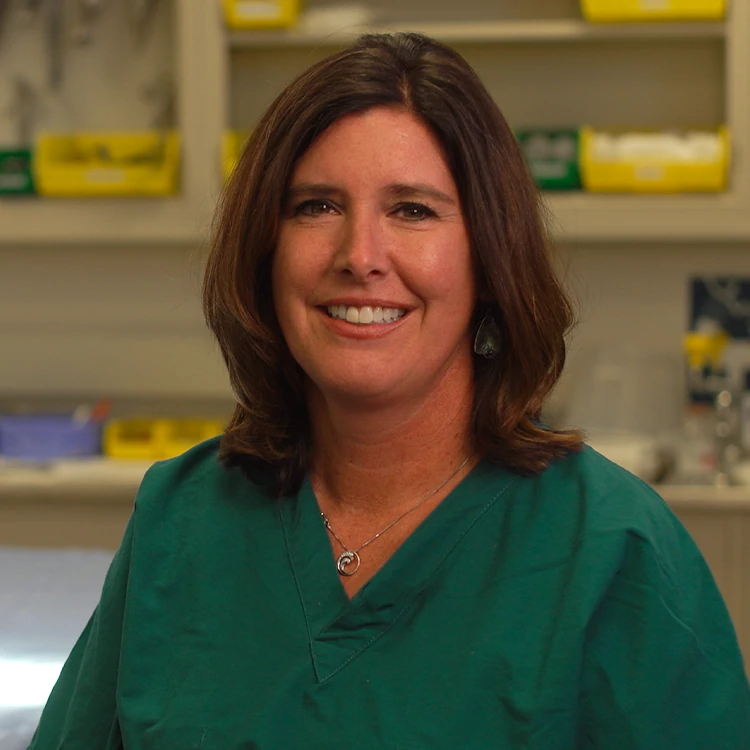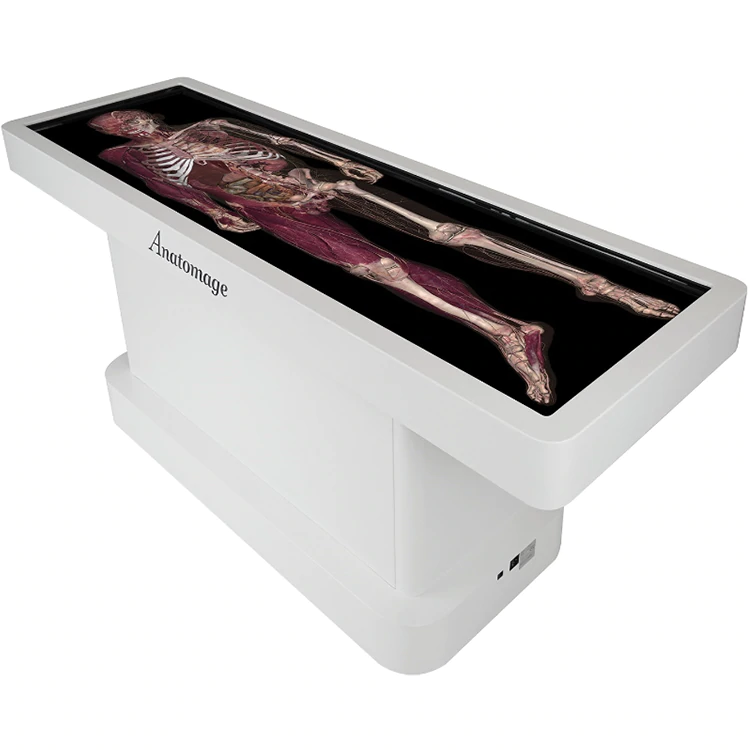Layers of Learning
Virtual anatomy table offers new view of implantable devices.
As a scientist at Medtronic, Dr. Andrew Cleland works closely with teams designing new implantable medical devices and therapies. One of the most valuable tools for his work is not hand-held, but touchscreen.
The Anatomage Table — an interactive, touchscreen-enabled, virtual anatomy table created by the Silicon Valley-based Anatomage company — allows Medtronic researchers working on new device design to see and manipulate life-sized CT scans and MRI scans of real human bodies.
“It’s a useful tool to get everyone on the same page,” says Cleland, who helps develop surgical procedures for new products and therapies. “The table allows you to navigate in three dimensions through detailed anatomic structures, allowing the entire team to visualize the interactions and sizes of structures so they can start thinking about device requirements and implant techniques.”
Greg Sand, a preclinical study director at a Medtronic Research Facility in Minnesota, teaches researchers, engineers, and physicians how to use the Anatomage Table to further their work. He says it helps engineers, who typically don’t have a health sciences background, get a better understanding of how the products they develop fit within the human anatomy.
With just a few finger-taps on the touchscreen, users can do ‘virtual dissections’ — slicing open virtual bodies and even subtracting specific organs or entire layers of tissue — for unique, otherwise impossible views of the anatomy.
“Anatomical variability is always a big concern,” says Sand. “So allowing engineers to explore those anatomical differences on the table helps to add perspective around how they might design products to fit inside different bodies.”
We may be able to evaluate the product's performance in a virtual model where you can simulate the human anatomy and physiology of a living human in a virtual environment.
Greg Sand, preclinical study director, Medtronic
IMPROVING IMPLANT PROCEDURES
Study directors at Medtronic expected the Anatomage would serve as an educational tool, but they weren’t prepared for how valuable the table would be to their research.
When exploring the effectiveness of new device prototypes researchers often test devices by implanting them inside human cadavers. They can then run an X-Ray, CT scan or MRI scan of their finished work and upload those scans directly into the Anatomage Table.
In this way, the table can serve as a kind of report card for physicians working on implant research, allowing them to view and interpret their work within minutes of a completed scan.
“We are able to assess the surgical approach that the physician took for placing the device,” says Bridget Portway, a member of a team that develops safe implant procedures for new cardiac technology at Medtronic. “It really helps us appreciate if there were any risk of complications of our implant procedure based on looking at the images.”
That information can then help evaluate, refine, and improve the implant process.
TRAINING SURGEONS
The virtual technology has also impressed doctors who work with Medtronic research teams. The Anatomage Table, in recent years, has become a popular teaching tool in many university anatomy classes.
University cardiologist and electrophysiologist, Dr. Geoff Clare from Christchurch Hospital in New Zealand calls Anatomage an advanced tool compared to the textbooks that he and many other doctors still use to learn anatomy for implant procedures.
He says the table’s ability to quickly add or remove different tissue groups for better, three-dimensional views of the anatomy speeds up the learning process and provides more insight than traditional, formal dissections of human cadavers.
“For implant procedures, there is always a learning curve with any procedure which comes with an increased risk of complications,” said Dr. Clare, who will be part of a team of physicians participating in the upcoming clinical trials for a new Medtronic cardiac device. “Having a greater understanding of an implant procedure through the knowledge gained from the Anatomage Table can help make learning new procedures faster and safer.”
Another benefit, he says, is that the table can tailor to the individual learning needs of each physician. If there’s a particular area of anatomy that a doctor feels uncertain about, then you can customize the imagery on the Anatomage Table to learn about those structural relationships.
“For me, having it available as I trained would undoubtedly have sped up my understanding of the orientation of the structures within the heart for learning trans-septal puncture and cardiac ablation, and would have been a valuable starting tool when taking up a new technique such as dry pericardial access for epicardial ablation.”
IMPROVING THE FUTURE OF DEVICE DESIGN
Portway says she’s so impressed with Anatomage’s educational value that she’s hoping the table can be part of all training for new worldwide clinical trials of a device she’s currently working on.
“Being able to see first-hand an implanted system in a clinical patient helps answer questions, not only for the implant procedure team, but for the design and device engineers as well,” she says.
In fact, the high-tech table is in high demand among teams working across Medtronic on the next generations of implantable devices. And its practical uses may only grow.
Currently, researchers use the technology to confirm their theories on how a device may fit within the body and interact with nearby organs or other structures. As this type of technology improves, it may lead to computer assisted design of new medical devices based on 3D models.
“It’s possible this could take device engineers to the next level in their bench-top development process,” says Sand, who points out the costly price tag and limitations of current cadaver-based research and testing. “We may be able to evaluate the product's performance in a virtual model where you can simulate the human anatomy and physiology of a living human in a virtual environment.”



